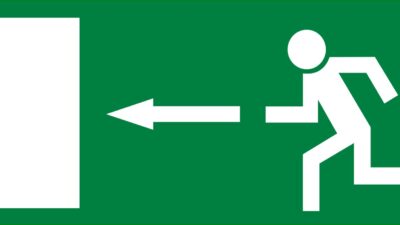Fire strobe and seizures The story “Strobe Coverage May Need to Go Beyond NFPA 72 to Ensure Safety,” in the October edition of the Fire and Life Safety newsletter offered some disturbing news in the discussion of some AHJs requiring increased strobe lighting intensity levels for fire alarm systems in retail operations.
Fire strobe and seizures
The story “Strobe Coverage May Need to Go Beyond NFPA 72 to Ensure Safety,” in the October edition of the Fire and Life Safety newsletter offered some disturbing news in the discussion of some AHJs requiring increased strobe lighting intensity levels for fire alarm systems in retail operations. There is already a tendency among designers to overlight an area to exceed the minimum requirements. There seems to be no thought or care regarding the fact that the alarm strobes can cause epileptic seizures among a significant percentage of our population. Not only during an alarm situation, but during the periodic testing performed by the local fire marshals.
I urge the committees involved to be cautious and not overzealous in a single direction. I have seen strobe lights cause seizures on individuals during tests, and wonder if we really want to compound an emergency situation.
Spencer Neufeld, P.E.KTA Group, Inc.Herndon, VA.
Selective coordination concerns revisited
The article “A Critical Look at Selective Coordination” (CSE 9/06, p. 21) raises the question of whether selective coordination is needed or not. Being a member of the NFPA-70 Code Making Panel 13 (CMP-13) I feel compelled to respond, and the answer, in my opinion, is yes.
Selective coordination applies to critical life safety and property protection loads in large buildings. Its purpose is that if a fault in a critical load occurs, it will not trip an upstream overcurrent protective device (ODC) fuse or circuit breaker, since this would disrupt one or more of the other emergency loads.
Author Jim Degnan argues against the need for selective coordination, at least in emergency systems, as he claims the odds are “minuscule” that such steps are necessary. If this were the case, I don’t believe anyone would pay to have such loads on emergency power. These loads and their backup emergency power supplys are in place for the abnormal event, such as a fire, and consequent power failure.
The requirement for backup power is due to the likelihood of loss of power during a fire. This is historic fact and illustrated by a number of disastrous high-rise conflagrations and other fires that have resulted in loss of both life and property. Given that emergency systems do exist, shouldn’t they be protected from harm?
Mr. Degnan also states “An emergency system is most likely to fail under everyday operation.” I believe this to be a contradiction—everyday operation is not emergency operation.
Furthermore, he states, “More than 99.9999% of electrical systems in existence today were designed using engineering judgment and do not meet the 2005 NEC’s strict definition of being selectively coordinated…” I don’t know where this number comes from, but I wonder if other electrical designers would agree that only 0.0001% of electrical systems are so coordinated. If this were the case, a faulty hair dryer would likely take out the power for an entire high-rise apartment. But the main issue here is selective coordination of the emergency loads. The article does get into the issue of fuses vs. circuit breakers, but wouldn’t the same discussion hold true for the normal power source circuitry in a building?
I don’t find any hard evidence against either the need or the practicality of the subjective selective coordination. Code-making panels reject all proposals seeking to eliminate or weaken the requirements of 700.27 and 701.18. It’s true there was considerable discussion of this topic recently by the panel. But I don’t feel that the decision by the panel is flawed in any way.
Other technical considerations brought out in the article are not substantiated, nor are the methods shown in the figures the only options available. What’s missing is specific examples of where difficulties or inordinate costs may occur. If there are such specific considerations, I encourage anyone to submit public comments.
Finally, Code Making Panel No. 13 did not reject Proposal No.13-77. This proposal seeks to re-coordinate the extracted text from the NFPA-20 (Fire Pumps) section on power supplies with NEC Article 695. The panel accepted this proposal in principle in part.
The Technical Correlating Committee (TCC) does recommend that the panel reconsider the proposal. This comment along with any others will be considered at the panel meeting in November. I don’t know why the TCC showed the panel action as rejected. Further note that my vote on this proposal was a directed vote. I personally am in favor of proposal 13-77 because it is nearly identical to my proposal 13-82.
In summary, one of the best arguments for selective coordination of emergency circuits appears in clause 700.27 of the 2005 NEC Handbook: “This requirement, new in the 2005 NEC, requires that all emergency system overcurrent devices be selectively coordinated with the overcurrent devices installed on their supply side. The term ‘coordination’ (selective), as defined in Article 100, indicates that a selectively coordinated system is one where the operation of the overcurrent protective scheme localizes an overcurrent condition to the circuit conductors or equipment in which an overload or fault (short circuit or ground fault) has occurred. Because the purpose of an emergency system is to provide power to essential life safety systems in a building or facility, a selectively coordinated overcurrent protection scheme that localizes and minimizes the extent of an interruption of power, due to the opening of a protective device, is a critical safety element. Continuity of operation of illumination for occupant evacuation or maintaining continuity of operation of essential safety equipment such as smoke-evacuation systems is necessary for occupant safety during a fire or other emergency. Simply put, an overcurrent event (overload, short circuit or ground fault) in a 20-amp branch circuit cannot cause the feeder protective device supplying the branch circuit panelboard to open. This coordination must be carried through each level of distribution that supplies power to the emergency system. Design and subsequent verification of electrical system coordination must be carried through each level of distribution that supplies power to the emergency system. Design and subsequent verification of electrical system coordination can be achieved only through a coordination study that entails detailed knowledge of electrical supply system fault current characteristics and a design that integrates overcurrent protective devices that react to overcurrent and interact with each other in such a manner that the objective of minimizing outages by localizing the overcurrent problem and isolating that part of the emergency system can be achieved.”
Note that the comment on 701.18 refers to the above discussion of 700.27.
James S. NasbySkokie, Ill.
Author Jim Degnam responds: I wish to thank Mr. Nasby for his interest in the article, as well as many others who have complimented its content. I acknowledge the correction regarding CMP No. 13’s status on proposal 13-77 and the transposition of 27 and 18 after 700 and 701 in the code references (as noted in CSE’s October Letters page). But to Mr. Nasby’s specific points: First, I entirely support the NEC’s position on emergency power systems prior to the 2005 addition of selective coordination. I don’t believe that identifying the problems associated with implementing selective coordination can be extended to a position that says buildings shouldn’t have emergency power systems.
Second, the most common emergency system in a building is egress lighting. Selective coordination begins at the branch circuit level, and egress lighting branch circuits are in operation every day.
To substantiate my claim that 99.9999% of today’s systems are not selectively coordinated, one can evaluate commonplace selective coordination issues. A familiar example is a 20-amp circuit breaker with an upstream 225-amp circuit breaker, at either 120 or 277 volts. For example, on a 120/208-volt system the trip curves for 20- and 225-amp circuit breakers do not selectively coordinate for faults above 100 amps. On a 480/277-volt system, the trip curves for 20- and 225-amp circuit breakers do not selectively coordinate for faults above 500 amps. Therfore, if the fault current is above a level as modest as 1,000 amps, the time current curves show that these two pairs of circuit breakers will not selectively coordinate. The curves do not substantially change with manufacturer or commonly used varieties of molded-case circuit breakers. The curves are representative of every installation that relies on 15- or 20-amp circuit breakers and upstream circuit breakers rated 225 amps or less.
It can be argued that using an egress lighting load of 0.1 watts per sq. ft, a 277-volt, 3-phase system with a 225-amp feeder can support the egress lighting load in a building with up to 1.2 million sq. ft. For a 120-volt system, the 225-amp breaker is representative of any building step-down transformer rated 75 kVA or less. The 225-amp breaker (or smaller) size with a downstream 20- or 15-amp circuit breaker also represents the electrical system of just about every U.S. residential abode.
Additional coordination studies reveal that whenever two molded-case circuit breakers are in series, the chances that they will not selectively coordinate are excellent. Furthermore, if any 20-amp circuit breaker is downstream of a fuse rated 225 amps or less, the system will not selectively coordinate.
At this point, the reader can argue the exact number of “9s” used in the percentage. Using the engineering data available, the systems that we live in every day are not selectively coordinated; yet when the branch breaker trips, we don’t have a problem. Why? The most probable reason is that the point where the fault occurs has some resistance. Even a very small resistance, say 0.25 ohm, will limit the fault current to a value that is less than 1,000 amps. This results in operation of the downstream overcurrent protective device prior to the upstream device. If this was not valid, we would all have some negative experience with non-selectively coordinated systems, and the NEC would have been forced to address it a long time ago.
The point of the article is to indicate that the mandate for selective coordination has very little real-world justification if engineers, contractors and inspectors will encounter significant problems with implementing it.



